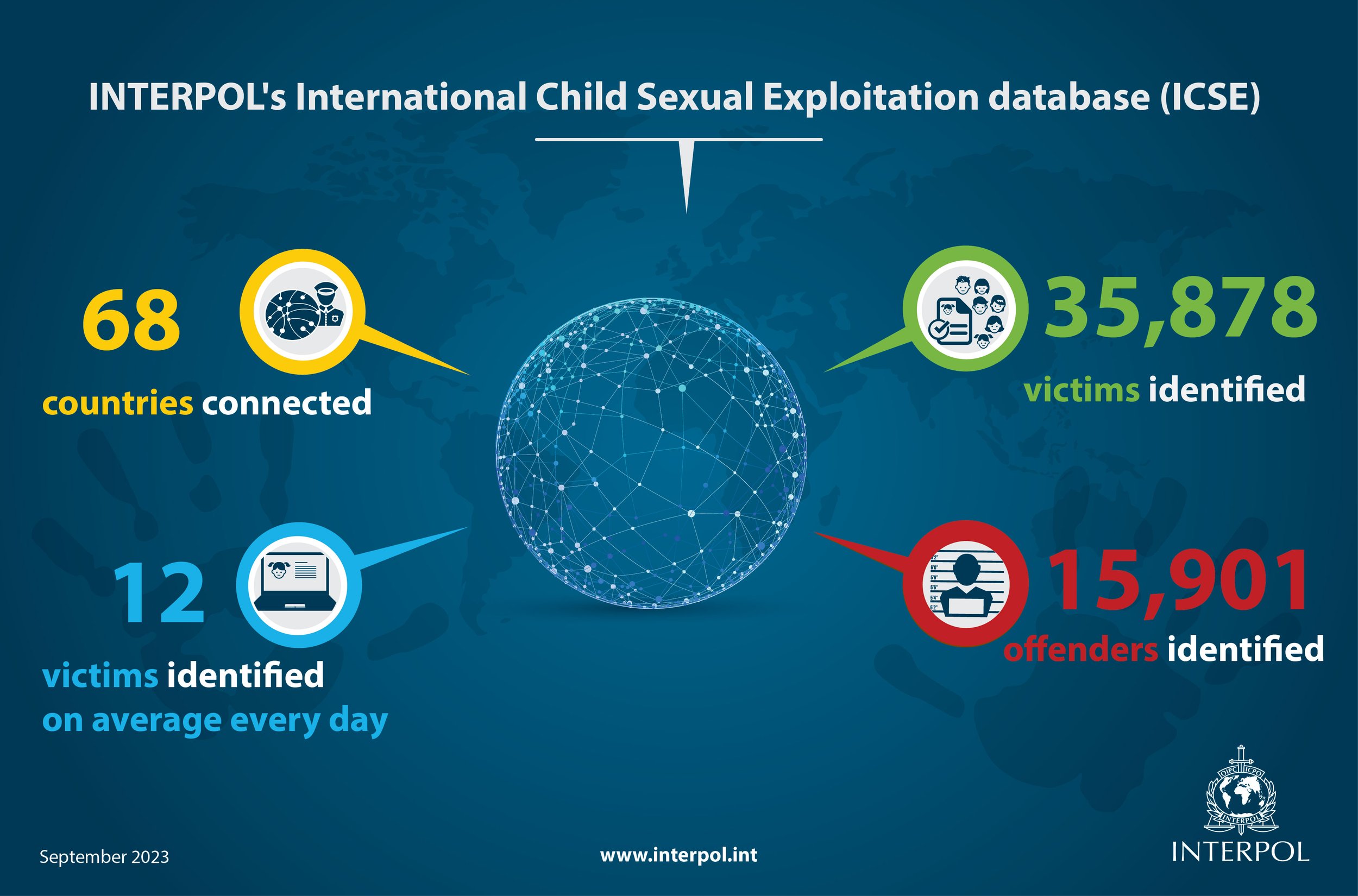INTERPOL’s Child Exploitation Database
Young victims, severe abuse
Most people don’t realize that when we talk about child sexual abuse, this includes the abuse of very young children, and even babies.
Following the examination of random selection of videos and images in the ICSE database, INTERPOL and ECPAT International published a joint report in February 2018 entitled Towards a Global Indicator on Unidentified Victims in Child Sexual Exploitation Material.
The study identified a number of alarming trends:
The younger the victim, the more severe the abuse.
84% of images contained explicit sexual activity.
More than 60% of unidentified victims were prepubescent, including infants and toddlers.
65% of unidentified victims were girls.
Severe abuse images were likely to feature boys.
92% of visible offenders were male.
Why is gender important? It is often considered that most victims of sexual abuse and exploitation are girls. However, the significant proportion of boys depicted in unidentified images and videos in the ICSE Database invites closer attention to this group.
Why is ethnicity important? In some cases, the ethnicity of victims may be a proxy indicator for the location of the abuse or exploitation. However, the ethnicity of the victims in the database does not necessarily paint an accurate picture of the ethnicity of victims globally, because many countries do not yet contribute images and videos to the ICSE Database. This highlights the need to connect more countries and regions to the database to generate a more nuanced understanding of victims’ ethnic profiles.
Why is age important? It is often assumed that victims of sexual abuse are older children. This may be due in part to increased media attention and public awareness surrounding the risks associated with young people’s use of technology and the Internet, including the production of youth-produced material, but it may also be due to the fact that most people find it hard to imagine the extreme sexual assault of an infant. While the victimisation of any child of any age is inexcusable, over 60 percent of unidentified victims in this study were prepubescent, including very young children (infants and toddlers). This finding highlights the need to reflect and potentially prioritise this age group in policy and programming.
Why is this important? This finding supports the contention that most producers of CSAM/ CSEM are male. However, the significantly lower proportion of female offenders depicted in the analysed series does not negate the importance of understanding the role played by adult and young females in the abuse and exploitation of children. Whether females were seen offending alongside males, or where lone female offenders were seen abusing a child, it was difficult to tell from a visual assessment whether the depicted abuse and exploitation was committed at the behest of the male offender, female offender, or as a truly collaborative act. The role played by females in CSAM/CSEM production is apparently complex, particularly in terms of distinguishing females who act as proponents or facilitators of this crime, or both. This area requires further, focused investigation in order to inform improved strategies for the management and prevention of child sexual abuse and exploitation
Why is this important? There were several possible reasons identified for the low proportions of some ethnic groups in CSAM/CSEM producer profiles, including the current geographical scope of countries connected to the ICSE Database. Based on this study, producers of CSAM/CSEM appear to have a preference for victims of the same ethnicity. It should be noted however that this could also be the result of proximity and opportunity when the offender is part of the victim’s circle of trust or community, or where travelling sex offenders travel to abuse children within their own country or region. This belies the assumption that sexual exploitation of children is a crime only carried out by white males travelling to developing countries. Possible exceptions are cases of travelling sex offenders who travel outside of their home country or region to abuse children.
Why is the number of depicted victims important? Understanding the situation of unidentified children requires insight into the context of their victimisation. For example, the high proportion of single victims may be the result of the secretive nature of child sexual abuse, where silence is enforced by an offender through grooming, manipulation and threats to a child victim. Cases involving multiple victims may indicate intra-familial (e.g. sibling) or peer abuse, or a more opportunistic offending profile (e.g. child abuse by travelling sex offenders).







